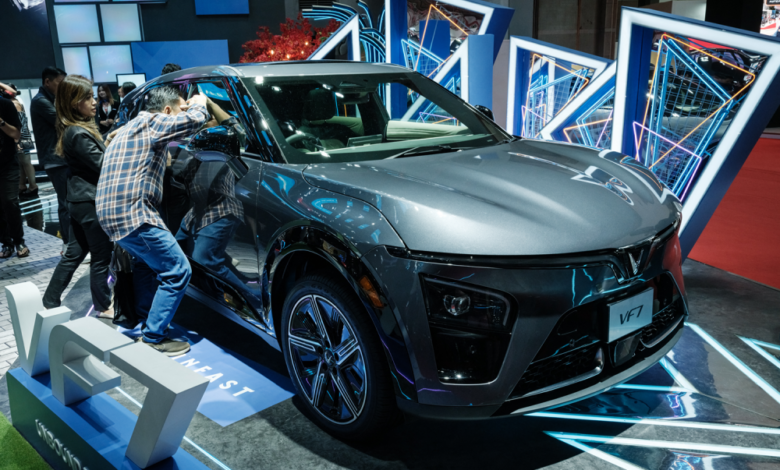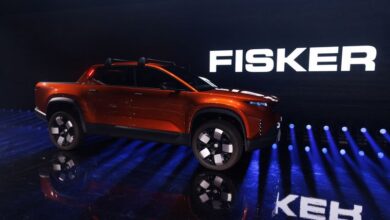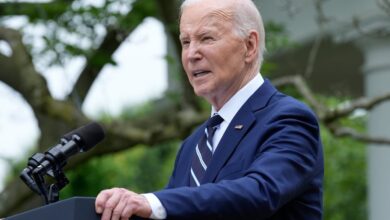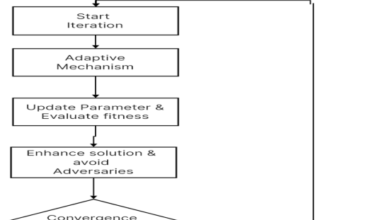Indonesia’s Electric Vehicle Transition May Hit Roadbumps

“It took 40 or 50 years to industrialize China,” said Rachmat Kaimuddin, Indonesia’s deputy coordinating minister for investment and maritime affairs. “We may have to be faster.” Indonesia’s government has set an ambitious target of becoming a developed nation by 2045—partially through a big bet on becoming a global hub of electric vehicle production.
Jakarta has spied an opportunity to turn its enormous domestic reserves of nickel and cobalt into an engine for growth amid the global green transition. The minerals are vital for battery production and can be used as a base to build a domestic supply chain running from mine to motorist.
So far, the gamble seems to be working. Indonesia now accounts for 51 percent of global nickel production, crushing competition on cost, and is the second-largest producer of cobalt after the Democratic Republic of the Congo. Five companies—South Korea’s Hyundai, Japan’s Mitsubishi, and China’s Wuling, Chery, and DFSK—are already producing at least a handful of EVs in the country, with more promising to follow. They are accompanied by major battery-makers and battery material manufacturers.
While the nascent industry faces myriad tripwires—including its own domestic issues, geopolitical protectionism, environmental concerns, and technological change—there are reasons for optimism. Even using conservative estimates, Indonesia should be capable of producing 500,000 EVs a year by 2030, said Luke Gear, the principal analyst for batteries and EVs at Benchmark Mineral Intelligence.
That’s a good thing because Indonesia’s whole development agenda rides on this—and the road ahead is bumpy. To hit government development targets by 2045, growth in Indonesia will have to rise from an average of around 5 percent to 6 or 7 percent. At the most basic level, the country needs to be able to produce desirable goods, ensure these goods come from industries that absorb workers into high-productivity jobs, and attract the massive foreign direct investment (FDI) needed to build these industries. Should the country fall short, Indonesia’s current demographic dividend of young workers and consumers will turn into a drag. Hope mingles with quiet anxiety about when the window of opportunity now glimpsed will close.
The EV industry seems to neatly tick all these boxes. The EV market is expected to expand ferociously in coming years. The International Energy Agency estimates that by 2035, every other car sold will be an EV. Many of the jobs created by the huge ramp-up in production will be in factories, industrialization being the quintessential way to move workers from low-productivity sectors such as farming or small-scale services into high-productivity ones.
The country has not been shy about using its huge critical minerals resources to leverage companies to invest in the country and ensure the FDI it needs for the industry. A ban on exports of nickel ore pushed, overwhelmingly Chinese, companies to start refining in Indonesia. In 2023, Chinese companies poured $4.2 billion into metals and mining projects in Indonesia.
Now the focus has shifted to building up battery and EV production details. Here the government is deploying more carrots than sticks. To qualify for subsidies, EVs manufactured in Indonesia must meet a certain level of local content requirements, which will rise over time. But in return, value-added tax on these EVs is just 1 percent. Major investors in the sector also receive 10-year tax holidays, and there will be no import or luxury taxes on the EVs they ship in while they develop Indonesia-based production.
The policies seem to be working. Hyundai, Mitsubishi, Wuling, Chery, and DFSK have all already started production on EVs in Indonesia. China’s BYD—which is neck and neck with Tesla in total EV sales—hopes to start production this year. The same goes for Stellantis’s Citroen and China’s GWM.
While a number of major U.S. and European manufacturers have yet to commit, this is not necessarily an issue. Many have been caught flat-footed by the global EV transition, offering an opportunity for upstart companies from China and new production hubs.
But the flipside of the transition is that the desire to protect totemic national industries is also spawning a developed-world protectionism that could derail Indonesia’s export hopes. Thickets of conditions attached to Biden administration EV subsidies preclude vehicles assembled in Indonesia. The European Union is also moving in an increasingly protectionist direction, panicked by the influx of cheap Chinese EVs hitting its market. The huge quantities of coal burnt by Indonesia make its EVs relatively carbon-intensive.
Part of the issue is fear of Chinese dominance of green supply chains. But this is inextricably linked to the failure of most Western automakers to keep up with technological shifts. Stellantis has performed reasonably well. However, GM, Ford, and Volkswagen are being left in the dust.
After lecturing developing nations for years about protectionism of uncompetitive but politically significant industries, the West is shifting its stance when the boot is on the other foot. Protectionism and Western manufacturers slow-walking the walkout of their unprofitable EVs, plus a rocky global economy, have contributed to the fact that while EV sales continue to grow, the rate of growth is slowing and has been revised down, said Timothy Bush, the executive director of EV battery research at UBS.
Another threat to Indonesia’s plans is further technological change. Much of Indonesia’s appeal hinges on its abundance of nickel and cobalt, which are needed for NCM batteries. However, over the past five years, LFP batteries—which use neither nickel or cobalt—have gone from niche product to supplying more than 40 percent of the EV battery market. Ironically, NCM batteries—which are more expensive but have greater range—might be best suited for the U.S. market, where consumers have deep pockets and drive unusually long distances by global standards. But Indonesia is locked out of that market.
Indonesia will also face potentially stiff competition from other countries looking to get in on the EV manufacturing boom. “Lack of strong domestic demand for EVs could be a hurdle to attracting more local manufacturing. Usually, battery and auto manufacturers favor markets that have a sizable end-user base,” said Komal Kareer, an analyst at BloombergNEF. Indeed, Indonesia is already facing competition from Thailand, which is the largest auto exporter in the Association of Southeast Asian Nations (ASEAN) and home to the region’s biggest EV market by volume.
In this context, the non-EV-specific issues that Indonesia has long struggled with take on a particular importance. Recent reforms have tried to make life easier for foreign investors. However, non-tariff barriers remain a major issue. And for many businesses, the need for relationships with power brokers to help navigate the country’s murky regulations is just a reality of life. Key Chinese investments in the nickel sector have been guided by Luhut Binsar Pandjaitan, the coordinating minister for maritime affairs and investment—Indonesia’s Mr. Fix It.
Indonesia’s education system also still leaves much to be desired—consistently performing worse than peer countries. Finding qualified workers for EV companies may be a challenge. Compounding this issue is the apparent trend for technological developments making manufacturing more skill- and capital-intensive and less labor-absorbing. Instead of EV manufacturing generating jobs for less-skilled workers, Indonesia may find itself struggling to provide a suitably trained workforce for a few specialist positions.
Still, none of these potential problems need be a death sentence. Despite a slowing rate of growth of EV sales, many analysts remain bullish, pointing out that the global market is still expanding strongly. Beyond its minerals, Indonesia is also attractive because of its huge domestic car market, the largest in ASEAN, said Gear of Benchmark. And while domestic EV penetration is currently low, demand is expected to grow fast. A strong domestic market could help support companies as they move to export.
Anti-China protectionism could even work out in Indonesia’s favor if car manufacturers turn to Indonesia as an alternative base. “In this situation, the best policy that Chinese carmakers may adopt is to set up localized operations across many locations,” said Jigar Shah, the head of sustainability research at Maybank Investment Banking Group.
While the need for relationships with powerful movers and shakers can make things tricky, firms that build the right connections can see the red carpet rolled out for them. The various incentives for EV manufacturers have been worked in consultation with manufacturers, and those making investments can likely expect the Indonesian government to try to resolve the issues it faces. And while a new president is coming in, key figures in the current government are expected to find places in the new one—including the billionaire minister of state-owned enterprises, Erick Thohir, tipped by some to take on Luhut’s role.
On the technological front, the rise of LFP batteries could prove an issue—but a manageable one. LFP is “quite a significant risk,” said Koketso Tsoai, an autos analyst at BMI. “However, we expect the market share of nickel-rich batteries to rebound after a brief contraction, heading into 2026.” Nickel batteries’ advantage when it comes to energy density should ensure that it remains relevant for various applications. And the major planned investment in Indonesia by BYD—which almost exclusively uses its pioneering LFP Blade Batteries—also suggests that Indonesia has an appeal beyond just its nickel resources.
Nor is the technological direction of manufacturing written in stone. Recent studies have reassessed whether EV cars are less labor-intensive, suggesting that they may be about the same or in fact require more workers. BYD in particular, which is devouring market share, has developed a labor-intensive production model, with its founder flatly denying that building cars actually requires mastery of particularly complex technology.
As the technology, markets, and geopolitics shift with increasing rapidity, no policy bet that Indonesia makes will be a sure thing. “Will we succeed? Time will tell,” said Rachmat, the deputy coordinating minister. “What we know is we can’t stand still.”



